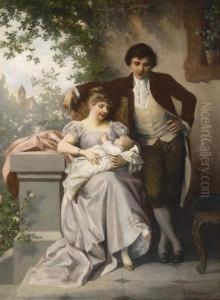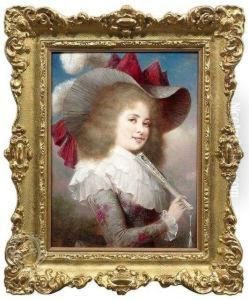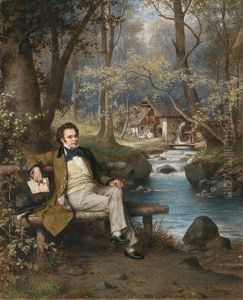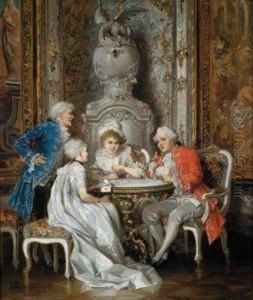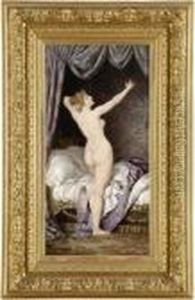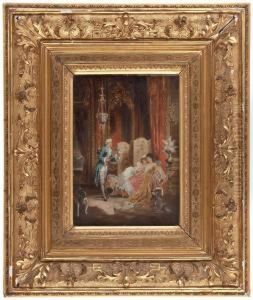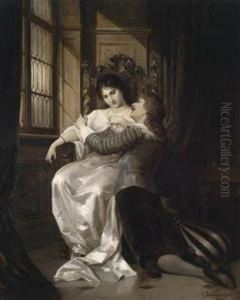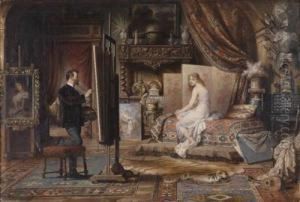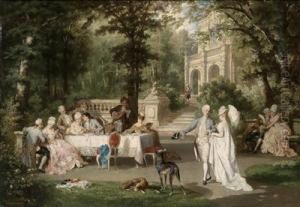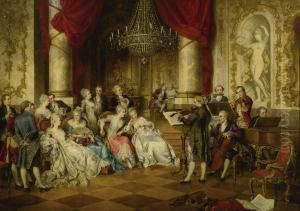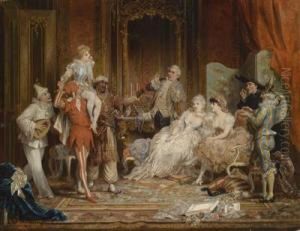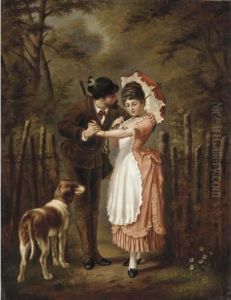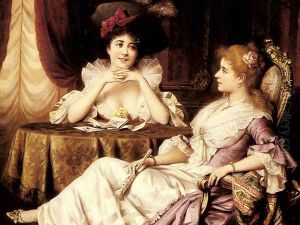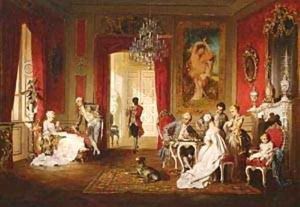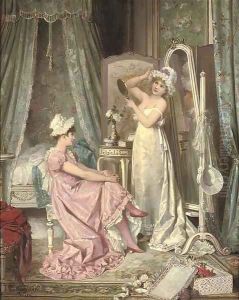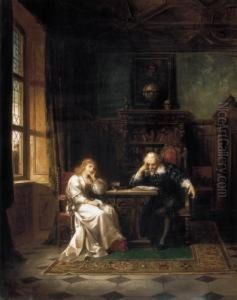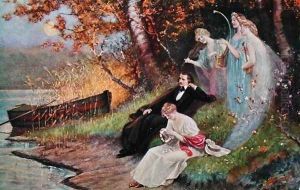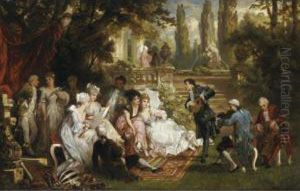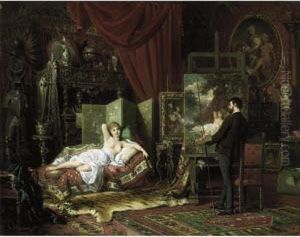Karl Schweninger Paintings
Karl Schweninger was a 19th-century Austrian artist known for his genre paintings and portraits. Born in Vienna on June 7, 1854, he initially studied under his father, who was also a painter. He then furthered his education at the Vienna Academy of Fine Arts, where he honed his skills and developed his distinct style. Schweninger's work is often characterized by a delicate use of color and a focus on light, which he used to enhance the emotional atmosphere of his scenes.
During his career, Schweninger enjoyed considerable success and was recognized for his artistic talents. He became a member of the Vienna Künstlerhaus, an association of artists in Vienna, which played a significant role in the cultural life of the city. His paintings often depicted everyday life and domestic scenes, which resonated with the Viennese middle class and contributed to his popularity.
Schweninger's portraits also garnered attention, as he was skilled at capturing the personality and essence of his subjects. His approach to portraiture was influenced by his understanding of human psychology, which allowed him to create insightful and often intimate representations of his sitters.
Despite his success, Schweninger's work was somewhat overshadowed by the major movements of the time, such as Impressionism, and as a result, he is not as widely remembered as some of his contemporaries. Nonetheless, his contributions to Austrian art of the period were significant, and his paintings continue to be appreciated by art historians and collectors today.
Karl Schweninger died on August 21, 1903, in his hometown of Vienna. His legacy lives on through his artworks, which provide a window into the society and culture of late 19th-century Austria.
